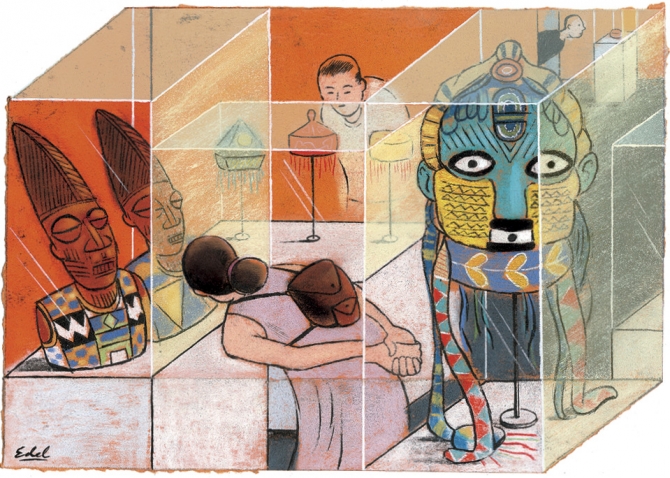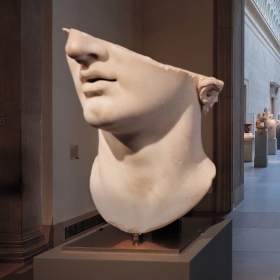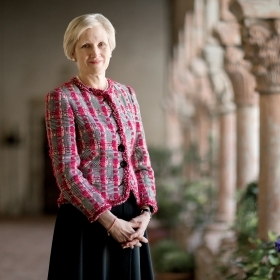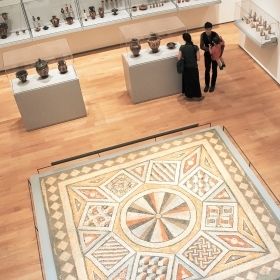Claudia Kincaid is my hero. Remember her? She’s the 11-year-old mastermind behind one of the great escapes of kid lit. She packs her violin case full of clothes, grabs her kid brother, Jamie, and leaves the drudgery of middle-school life to run away to the Metropolitan Museum of Art in New York City. From the Mixed Up Files of Mrs. Basil E. Frankweiler records how the two fugitives sleep in a canopied bed in the French and English furniture rooms, take baths in a museum fountain, and pick a gallery each day where they can educate themselves about a particular period of art. (“No other children in all the world since the world began had had such an opportunity,” thinks Claudia rapturously. Jamie is a little less enthusiastic about the educational possibilities and selects the massive galleries of the Italian Renaissance for their first exploration, in hopes that his sister will give up in despair.)
Yes, Claudia can be ever-so-slightly officious. But she does get something very right. Even when the grand adventure gets a tad old, she doesn’t want to go home until she is different—not just the same old kid who arrived at the Met. She finds a new sense of herself as she and Jamie sleuth out the secret of a little angel, which may or may not have been carved by Michelangelo. Intelligent and persistent, she recognizes the power of a museum to change her.
I remember a moment, not long after my mother’s death, when I stood in front of the luminous swirls of a van Gogh at the Philadelphia Museum of Art. The purples and greens were shimmering and alive, and the sadness I had felt cleaning out the family home suddenly gave way to joy. And a colleague recalls walking through the United States Holocaust Memorial Museum in Washington, D.C., for the first time, and suddenly coming upon the shoe room. “It was devastating,” she says. Thousands and thousands of shoes of victims of the Holocaust—women’s shoes, men’s shoes … baby shoes. “It gave a very powerful sense of the human beings involved rather than the numbers. Utterly devastating,” she remembers.
We all have examples from our own lives of the ways museums can change us—whether that means coming away with a stronger grasp on the facts of science or history, or a better understanding of the importance of cultural heritage and beauty. And it seems, if you believe a recent survey by Reach Advisors, that the American public trusts museums. Museums are considered the most trustworthy source of information in the U.S.—rated higher than newspapers, academic and nonprofit researchers, or the federal government.
In this era of fake news, museums are critical. Since Wellesley alumnae have long been a powerful force in the museum world—the College boasts hundreds of curators around the world, and has for decades—we’re making a foray into the Met Cloisters in New York (“Opening the Cloister”), the DuSable Museum of African American History in Chicago, and the Freer Gallery of Art and the Arthur M. Sackler Gallery in Washington, D.C. (“Curatorially Speaking.”) Take a read, and learn what makes their Wellesley curators tick. And a little closer to home, we’re visiting the Davis Museum on the Wellesley campus for a look at the breathtaking reinstallation of the permanent collections (“The Davis Rediscovered”).
As we negotiate this mixed-up world of ours, I wish you many great escapes to museums. And I hope that you, like Claudia, come away different.







